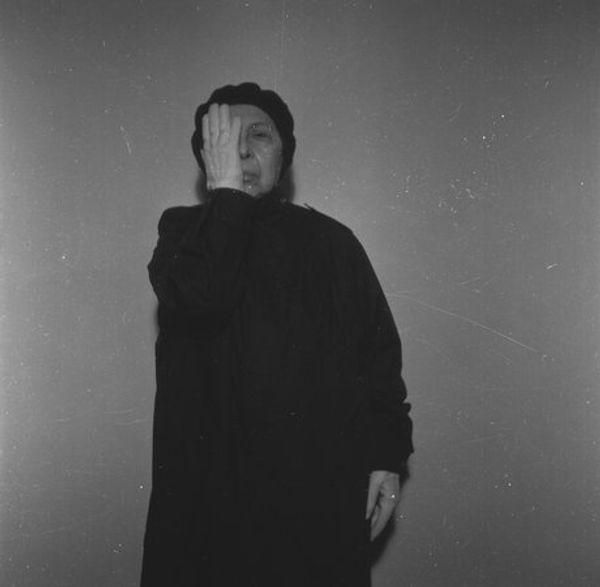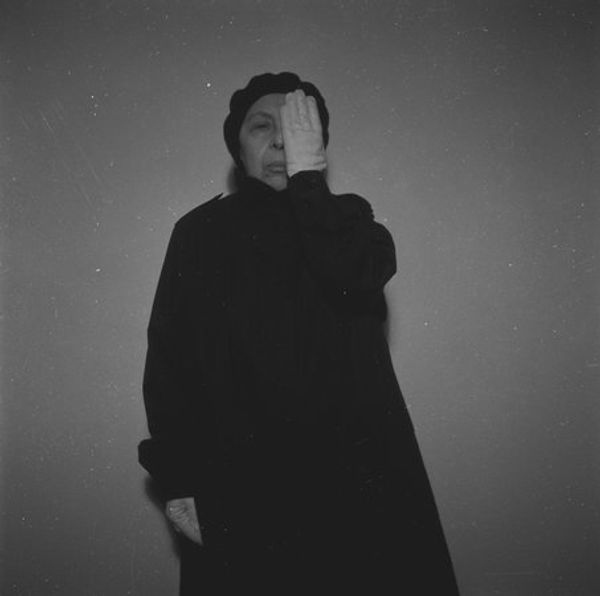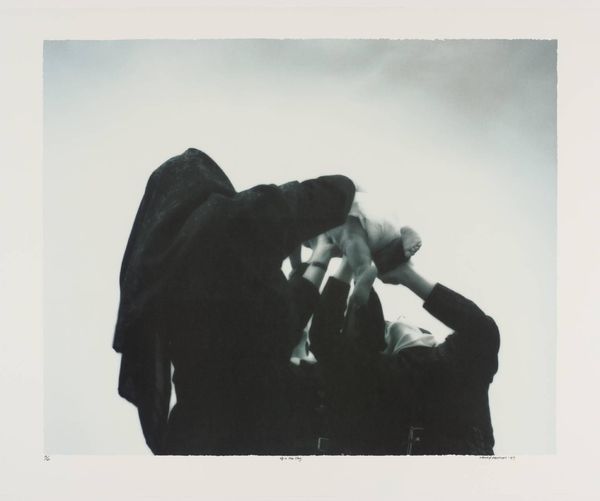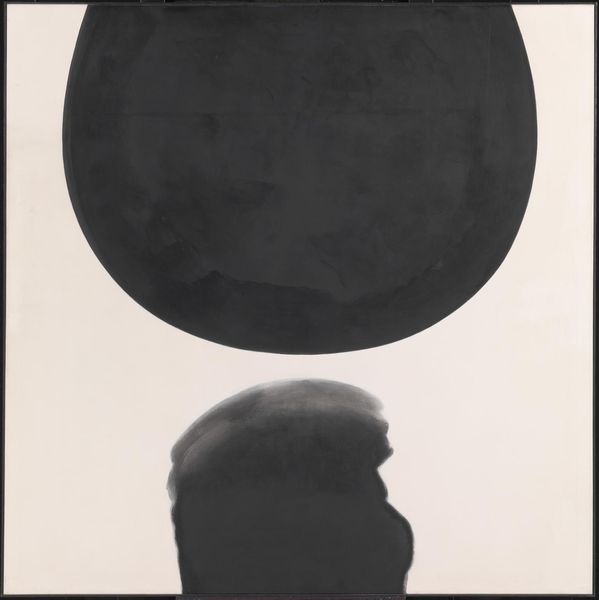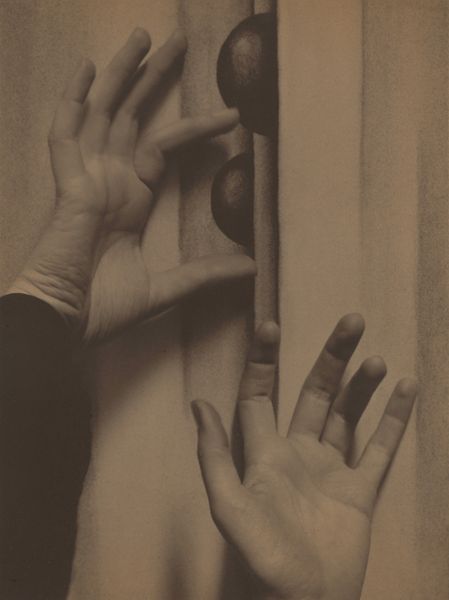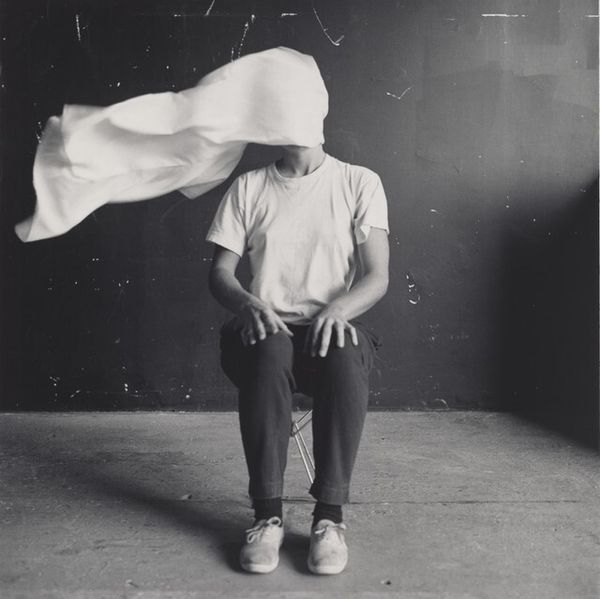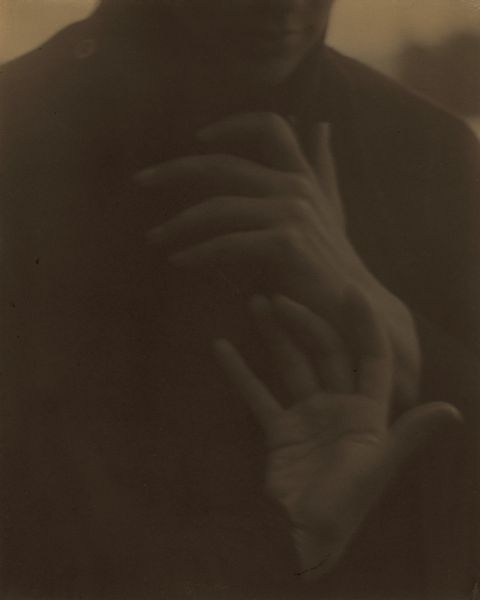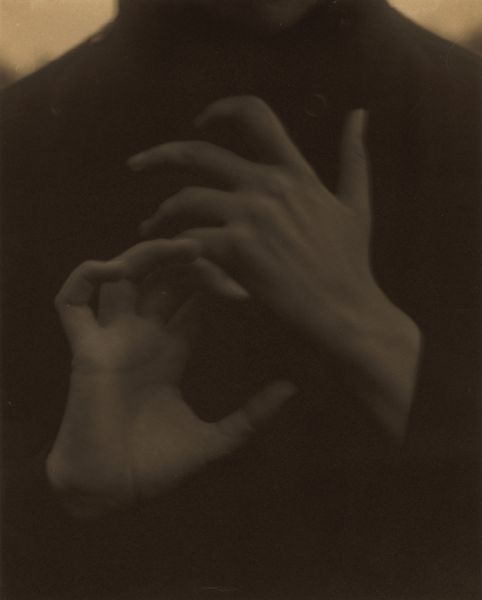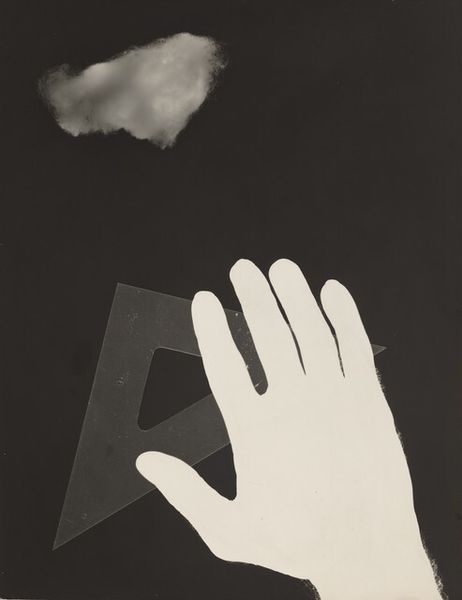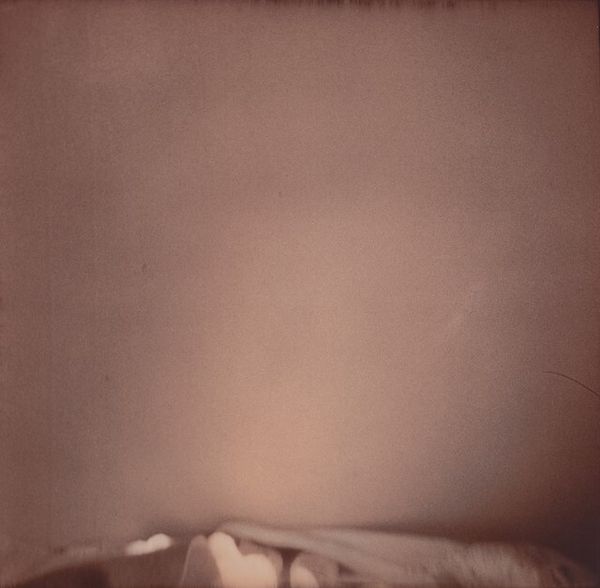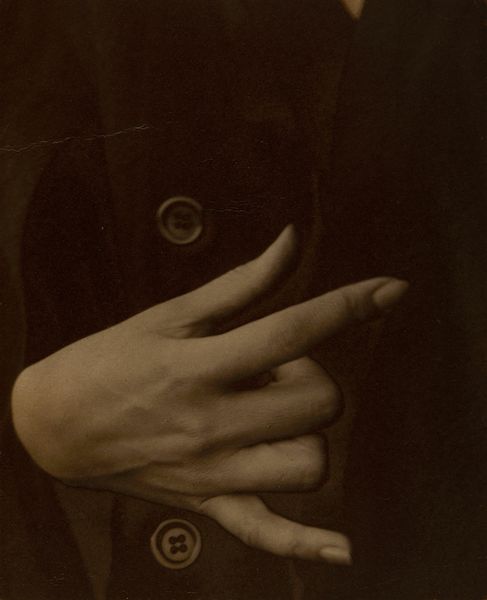
Copyright: Geta Bratescu,Fair Use
Curator: Well, let's dive into this gelatin-silver print by Geta Bratescu titled "Alterity," created in 2002. It's a monochrome photograph, strikingly abstract yet also hinting at a portrait. What are your immediate thoughts? Editor: The image certainly evokes a sense of mystery and unease. There's something about the faceless figure cloaked in darkness, obscured by what looks like a bizarre contraption. It makes me think of identity and concealment, a push and pull between presence and absence. Curator: Bratescu often explores themes of identity and the self, and "Alterity" is a compelling example of that. The title itself, referring to the "other," suggests a confrontation with something outside ourselves, perhaps even the hidden aspects of our own selves. The piece was made in a context in which previously marginalized groups began gaining greater attention and visibility in Romanian society. Editor: Right, and the artistic climate of the time undoubtedly influenced the work. I see Bratescu as questioning societal norms around self-presentation and how our identities are performed or masked. Considering feminist theory, perhaps there is commentary here on patriarchal structures that pressure the concealment of true selves. Curator: It's interesting to consider the influence of Abstract Expressionism, with that sense of raw, immediate emotion, yet filtered through a Conceptual Art lens. The object obscuring the figure's face disrupts our ability to read it as a traditional portrait. Editor: Yes, the obfuscation feels intentional, pushing beyond simplistic representational practices to address issues of the multifaceted nature of existence and its performance within social and gendered expectations. It also begs the question of whose gaze this "alterity" is intended for. Is the subject hiding from the world, or is it the world that’s failing to recognize or understand the complexities presented before them? Curator: The starkness of the monochrome further emphasizes the play of light and shadow. These gradations emphasize a tension in representation, reflecting a moment where societal roles began shifting in the post-communist Eastern European cultural landscape. Editor: Absolutely, and the contrast contributes to that underlying sense of anxiety, of being hidden or exposed, which for many carries political undertones and raises questions about whose realities get erased in broader social narratives. It's a work that compels you to look closer at what you expect to see and consider the layers beneath the surface. Curator: Looking at the details, it invites discussion about the gaze and visibility within artistic, social, and historical settings. It certainly does provoke dialogue about what we accept as fixed identities, challenging the norms within image and self-making. Editor: "Alterity" is a challenging and thought-provoking work—one that lingers in the mind long after you've encountered it.
Comments
No comments
Be the first to comment and join the conversation on the ultimate creative platform.
